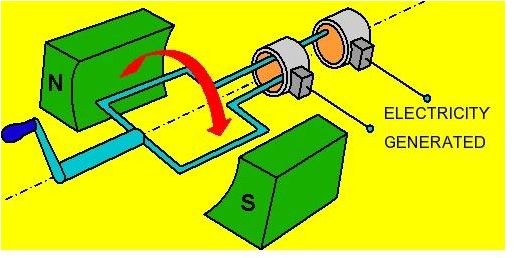How to Generate Electricity
First Law of Thermodynamics
How to generate electricity? What are the different methods of generating electricity? The first law of thermodynamics, also known as the law of conservation of energy, states that energy cannot be created nor destroyed, but can be transformed from one form to another. The generation of electricity is the conversion of energy like chemical, thermal, and potential (or kinetic) into the mechanical work of rotating a shaft. This mechanical rotation then gets converted to electricity in a generator. So basically it is not the generation of power, but the conversion of one form of energy into an electrical form of energy.
Different Methods to Produce Electricity
There are a number of methods to produce electricity. Some are economically viable but polluting, and others are more green but expensive. The different methods by which electricity can be generated are as follows:
- Thermal Power Plants: Here petroleum and petroleum products can be used for producing steam to run steam turbines generating electricity. In thermal power plants coal, petroleum products like furnace oil and natural gas can be used.
- Nuclear Power Plants: They use the heat of nuclear reactions like fission to heat water and again pass the steam to expand in the steam turbines to generate electricity.
- Hydro-electric Power Plants: They utilize the flow of water to generate electricity. In rivers dams are created to hold a reserve of water and this water is led through tunnels to water turbines situated below. The potential energy of the water is converted to the kinetic energy of the turbine and it is coupled to a generator generating electricity.
- Gas turbines using petroleum products and natural gas are also used for generation of electricity.
- Power plants running on petroleum products having an internal combustion diesel engine also are used for the generation of electricity.
- Geo-thermal power plants utilize the hot water and steam from natural hot water sources.
- Solar power is also used for generating electricity. Solar energy can be utilized directly in solar cells to generate electricity. The solar energy can also be used in solar thermal power plants where solar energy is used to heat water and then convert it into steam to drive steam turbines. Solar ponds are also used for generating electricity.
- Wind power can drive windmills and turbines to generate electricity. Wave energy of the oceans can be used to generate electricity using special machines using float chambers.
- Biomass can be used to replace coal and petroleum products in a thermal power plant.
- The other forms of electricity generation like osmotic gradient, static electricity, chemical reactions, and fuel cells are also used but not on very large scale. Though we use batteries a lot, we are discussing production for domestic uses like home lighting and industrial power supplies.
Principle of Generation
All the methods described above primarily produce mechanical power and cause turning of the shaft. They are called “prime movers.” At the end of the shaft, a generator is coupled which generates electricity The principle of generation of electricity is based on Faraday’s law of electromagnetic induction, which simply states that when a conductor is rotated or moved through a magnetic field, electrical potential is generated between the two ends of the conductor. When the two ends are connected to an external load, then electricity will flow through the load.
